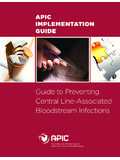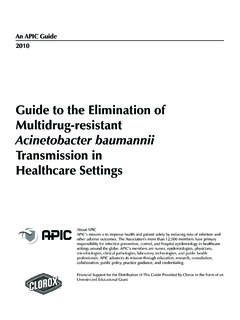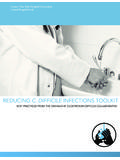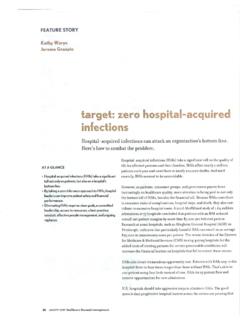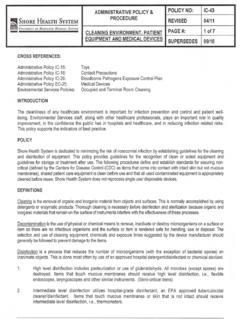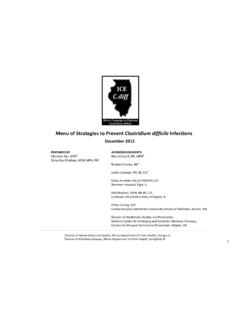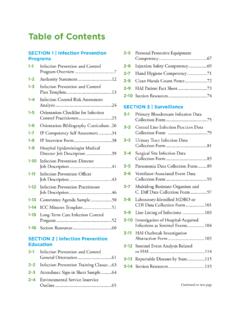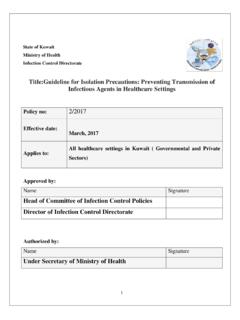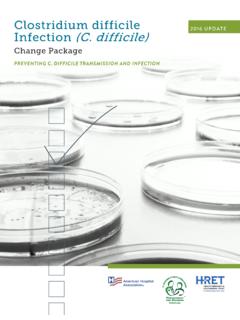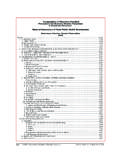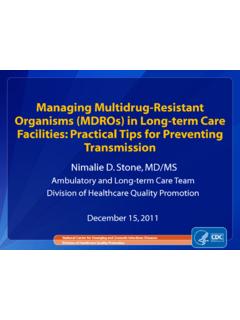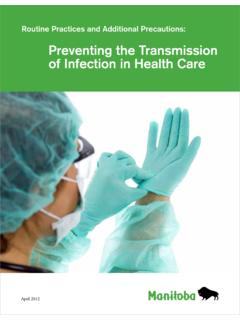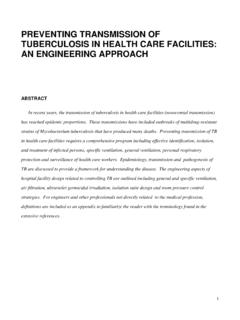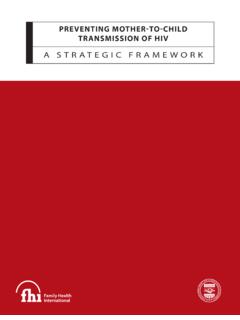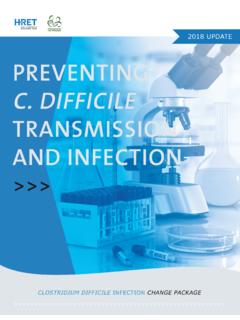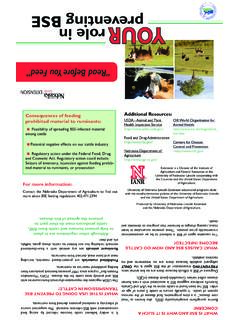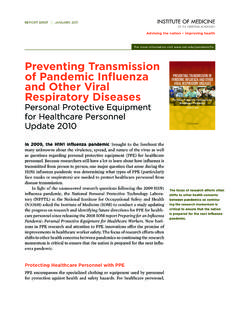Transcription of Guide to Preventing - APIC
1 APIC Implementation Guide Guide to Preventing Clostridium difficile Infections About APIC. APIC's mission is to create a safer world through prevention of infection. The association's more than 14,000 members direct infection prevention programs that save lives and improve the bottom line for hospitals and other healthcare facilities. APIC advances its mission through patient safety, implementation science, competencies and certification, advocacy, and data standardization. About the Sponsor Clorox Healthcare believes that patient care and safety are the cornerstones of infection prevention, and is committed to supporting education that helps advance the professional development of Infection Preventionists and reduce healthcare-associated infections, particularly Clostridium difficile. As a long- standing APIC Strategic Partner, Clorox Healthcare is honored to fund this C. difficile Implementation Guide and congratulates APIC, the authors, and all who were involved in creating a Guide that will serve as a free resource to the infection prevention community, with the goal of someday eradicating C.
2 Difficile. About the Implementation Guide series APIC Implementation Guides help infection preventionists apply current scientific knowledge and best practices to achieve targeted outcomes and enhance patient safety. This series reflects APIC's commitment to implementation science and focus on the utilization of infection prevention research. Topic-specific information is presented in an easy-to- understand-and-use format that includes numerous examples and tools. Visit to learn more and to access all of the titles in the Implementation Guide series. Copyright 2013 by the Association for Professionals in Infection Control and Epidemiology, Inc. (APIC). All rights reserved. No part of this publication may be reproduced, stored in a retrieval system, or transmitted in any form or by any means, electronic, mechanical, photocopied, recorded, or otherwise, without prior written permission of the publisher. Printed in the United States of America First edition, February 2013.
3 ISBN: 1-933013-54-0. All inquiries about this Guide or other APIC products and services may be directed addressed to: APIC. 1275 K Street NW, Suite 1000. Washington, DC 20005. Phone: 202-789-1890. Fax: 202-789-1899. Email: Web: Disclaimer APIC provides information and services as a benefit to both APIC members and the general public. The material presented in this Guide has been prepared in accordance with generally recognized infection prevention principles and practices and is for general information only. The Guide and the information and materials contained therein are provided AS IS , and APIC makes no representation or warranty of any kind, whether express or implied, including but not limited to, warranties of merchantability, noninfringement, or fitness, or concerning the accuracy, completeness, suitability, or utility of any information, apparatus, product, or process discussed in this resource, and assumes no liability therefore. Guide to Preventing Clostridium difficile Infections Table of Contents Acknowledgments.
4 4. Declarations of Conflicts of Interest .. 7. Introduction.. 8. Section 1: Pathogenesis and Changing Epidemiology of Clostridium difficile Infection (CDI).. 9. Section 2: Diagnosis.. 15. Section 3: Modes of Transmission .. 22. Section 4: Surveillance .. 24. Section 5: Focusing on Prevention: Hand Hygiene .. 32. Section 6: Focusing on Prevention: Contact/Isolation Precautions.. 37. Section 7: Focusing on Prevention: Environmental Infection Prevention .. 50. Section 8: Special Considerations in Skilled Nursing Facilities.. 67. Section 9: CDI in Special Populations .. 69. Section 10: Antimicrobial Stewardship and Clostridium difficile Infection: A Primer for the Infection Preventionist .. 73. Section 11: Fecal Bacteriotherapy .. 81. Section 12: Glossary of Terms.. 87. Section 13: Frequently Asked Questions.. 90. Appendix: Preventing the Transmission of Clostridium difficile in Healthcare Settings .. 97. Association for Professionals in Infection Control and Epidemiology 3.
5 Guide to Preventing Clostridium difficile Infections Acknowledgments Accomplishing this comprehensive update required input and expertise from a broad array of experts from practice and research settings. The Association for Professionals in Infection Control and Epidemiology acknowledges the valuable contributions from the following individuals: Lead author Ruth M. Carrico, PhD, RN, FSHEA, CIC. University of Louisville School of Public Health Louisville, Kentucky Contributors Kris Bryant, MD. Department of Pediatric Infectious Disease University of Louisville School of Medicine Louisville, Kentucky Fernanda Lessa, MD, MPH. Centers for Disease Control and Prevention Atlanta, Georgia Brandi Limbago, PhD. Centers for Disease Control and Prevention Atlanta, Georgia Loretta Litz Fauerbach, MS, CIC. Shands Hospital University of Florida Gainesville, Florida James F. Marx, RN, MS, CIC. Broad Street Solutions San Diego, California 4 Association for Professionals in Infection Control and Epidemiology Guide to Preventing Clostridium difficile Infections Fontaine Sands, DrPH, MSN, CIC.
6 Eastern Kentucky University College of Health Sciences Richmond, Kentucky Dana Stephens, RN, CIC. Saint Joseph Health System Lexington, Kentucky Kelly Westhusing, MPH, CPH. University of Louisville School of Medicine Louisville, Kentucky Timothy Wiemken, PhD, MPH, CIC. University of Louisville School of Public Health Louisville, Kentucky Reviewers Barbara DeBaun, RN, MSN, CIC. Improvement Advisor Cynosure Health San Francisco, California Sherrie Dornberger, RNC, GDCN, CDP, CDONA, FACDONA. Executive Director The National Association Directors of Nursing Administration in Long Term Care Cincinnati, Ohio Christina Franic, RN, BSN, ICP, MSc, MBA. CHICA Canada Vancouver Island Health Authority Nanaimo, British Columbia, Canada Candace Friedman, MPH, CIC. University of Michigan Hospitals and Health Centers Ann Arbor, Michigan Cindy Friis, MEd, BSN, RN-BC. Smith Bucklin Co. Society of Gastroenterology Nurses and Associates, Inc. Chicago, Illinois Association for Professionals in Infection Control and Epidemiology 5.
7 Guide to Preventing Clostridium difficile Infections Ann Herrin, BSN, RN, CGRN. Veterans Administration Health Care System Society of Gastroenterology Nurses and Associates, Inc. San Diego, California Phenelle Segal, RN, CIC. President Infection Control Consulting Services Delray Beach, Florida Production Team Managing Editor Thomas Weaver Director, Professional Practice Association for Professionals in Infection Control and Epidemiology, Inc. Project Management and Production Oversight Anna Conger Sr. Manager, Practice Resources Association for Professionals in Infection Control and Epidemiology, Inc. Layout Meredith Bechtle Maryland Composition Cover Design Sarah Vickers Art Director Association for Professionals in Infection Control and Epidemiology, Inc. 6 Association for Professionals in Infection Control and Epidemiology Guide to Preventing Clostridium difficile Infections Declarations of Conflicts of Interest Ruth M. Carrico, PhD, RN, FSHEA, CIC Has nothing to declare.
8 Kris Bryant, MD Has acted as principal investigator on clinical trials funded by GSK, Novartis, Pfizer, and MedImmune. Barbara DeBaun, RN, MSN, CIC Has nothing to declare. Sherrie Dornberger, RNC, GDCN, CDP, CDONA, FACDONA Has nothing to declare. Christina Franic, RN, BSN, ICP, MSc, MBA Has nothing to declare. Candace Friedman, MPH, CIC Has nothing to declare. Cindy Friis, MEd, BSN, RN-BC Has nothing to declare. Ann Herrin, BSN, RN, CGRN Has nothing to declare. Fernanda Lessa, MD, MPH Has nothing to declare. Brandi Limbago, PhD Has nothing to declare. Loretta Litz Fauerbach, MS, CIC Has nothing to declare. James F. Marx, RN, MS, CIC Has nothing to declare. Fontaine Sands, DrPH, MSN, CIC Has nothing to declare. Phenelle Segal, RN, CIC Has nothing to declare. Dana Stephens, RN, CIC Has nothing to declare. Kelly Westhusing, MPH, CPH Has nothing to declare. Timothy Wiemken, PhD, MPH, CIC Received two grants from Clorox Corporation to act as an investigator for activity of a hypochlorite-based environmental cleaner against C.
9 Difficile. Association for Professionals in Infection Control and Epidemiology 7. Guide to Preventing Clostridium difficile Infections Introduction Preventing Clostridium difficile transmission and prevention. Patients, long-term care residents,a infection continues to represent a serious and and families have been increasingly included difficult challenge in infection prevention and in care and care decisions. Patient and resident patient safety. The average total cost for a single education and healthcare professional training inpatient C. difficile infection (CDI) is more than continue to expand and evolve, producing new $35,000, and the estimated annual cost burden ways of addressing the problem. There has been for the healthcare system exceeds $3 collaboration between environmental services The epidemiology of this infection is changing, professionals and infection preventionists that has and its presence in healthcare settings as well produced innovation in environmental assessment, as the community has caused personnel across cleaning, disinfection, monitoring, and evaluation.
10 The entire healthcare continuum to re-evaluate And, there has been an increased understanding approaches and perspectives. Acknowledging of the need to use antimicrobials wisely. Clearly, this, the Department of Health and Human prevention of CDI requires a team approach. (See Services (HHS) convened the Federal Steering Appendix 1 for a diagrammatic overview of the Committee for the Prevention of Healthcare- prevention of CDI.). Associated Infections. Members of the steering committee include clinicians, scientists, and This document is an update to the 2008. public health leaders. In April 2012, the steering Elimination Guide and contains both new committee, along with scientists and program material and revised content that reflect the officials across HHS, released the National Action evolving practices and new discoveries. Plan to Prevent Healthcare-Associated Infections: Roadmap to Elimination,2 a healthcare-associated infection (HAI) action plan providing a roadmap References for Preventing HAIs in acute care hospitals, ambulatory surgical centers, and other facilities.

